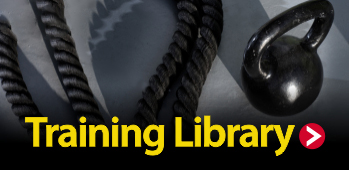MM Team Fitness
Work Capacity: Why Should Women Lift Heavy Weights.
- Font size: Larger Smaller
- Hits: 3250
- 2 Comments
- Subscribe to this entry
- Bookmark
After posting this morning’s album of the girls SDL’ing 6 sets of triples with some decent weight, I receive an email from a FB friend asking why I have these women, especially the older ones (not sure what she meant by older) lift so much weight. Well, it’s really not that much, certainly not powerlifter status, but they are not training to be powerlifters, just to live a better life. She was concerned about injury.
Supertraining author Mel Siff defined work capacity as "the general ability of the body as a machine to produce work of different intensity and duration using the appropriate energy systems of the body." I would add to that, and not get injured in the process.
The goal of MM Team Fitness is to enhance “general” work capacity to as a high a level as possible in any client given their age, physical limitations and abilities, without increasing the risk of injury.
So then, why would any non-competitive female aspire to deadlift 200 lbs, flip a tractor tire or clean a 62+ lb kettlebell, for reps, correctly?
Last Summer as I was loading up hardware supplies in the Lowe’s parking lot for a fireworks shoot I noticed a woman and her two young boys (looked to be about 8 and 12 yrs old) skinny as bean poles, pushing out a cart with about a dozen 0.5 cu ft bags of paver sand. I figure they were about 75 lbs a piece. She opened the back of her SUV and they attempted to load the sand. First, the two young lads grabbed a bag, one dropped one end then the other dropped his end. The bag broke open across the cart, mom was displeased. Second attempt was mom and the elder son, again the elder son dropped his end and mom with her legs straight, back rounded like a half-moon took the brunt of the dropped bag in a very compromised anatomical position. Instantly she fell to her knees grabbing her lower back, clearly in severe pain. An attendant from Lowe’s came running over to assist her onto the back of the SUV and there she sat unable to move. As I was pulling out of the parking lot she was on the phone, probably calling her husband on the golf course to tell him to take her to the hospital and the boys and sand home.
Back to work capacity. At a talk a couple years ago, Dr Barry Franklin, a well respected cardiovascular exercise physiologist from Beaumont Hospital in Royal Oak was explaining why it was important for cardiac rehab patients to include resistance training in their exercise programming. It had to do with developing work capacity relating to strength. We tend to refer to effort in terms of a percentage of our maximal capacity whether it be aerobic, a mix of aerobic/anaerobic or muscular strength/endurance. For example, if a subject is trained to lift 200 lbs, then that 75 lb bag of sand is 37.5% of their maximal lift, it will be perceived as an easy lift, both by the mind and the body. If the subject only trains to lift 35 lbs, then lifting the 75 lb bag of sand will seem insurmountable and likely result in serious physical injury.
Likewise, if a person has a VO2max of 40 ml O2/kg/min, that person would last about 1 minute on the treadmill at that workload. If the same person was able to achieve a VO2max of 55 ml O2/kg/min through physical training, running at a VO2 of 40 or now 73% of the maximal aerobic capacity would be easy and sustainable for hours, not minutes or seconds.
What does this have to do with life? Well, the mother cited above is one example, but simply raising kids that weigh 40+ lbs, moving furniture or having to do things you have to do yourself because no one else is available to help are all good examples of why being able to clean a 63 lb KB or deadlift 200 lbs allows you live a better life and stay out of the U$ Health Care System.
Comments
-
 Wednesday, 18 December 2013
Wednesday, 18 December 2013This is a great post! And a great comment, Bonnie!
I am now *actually useful* when we move furniture around. We moved in a new desk, and relocated our china hutch a few months ago, and it was a piece of cake. I helped my husband carry our treadmill down the stairs and out the front door over the summer. Before I worked out with you, I was the door holder, so my husband is very pleased with these developments.





For those of us who are "older", this type of training allows us to comfortably move through life, which we might not be doing without these workouts. It is an added bonus to be able to lift the bags of sand (or in my case, put the Christmas tree in the base with ease, something I could not do last year). Thank you to Mark for making it possible!